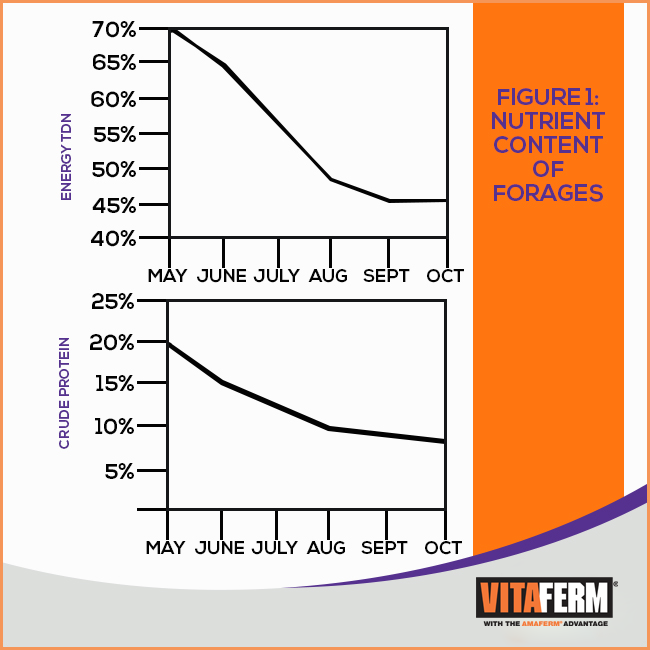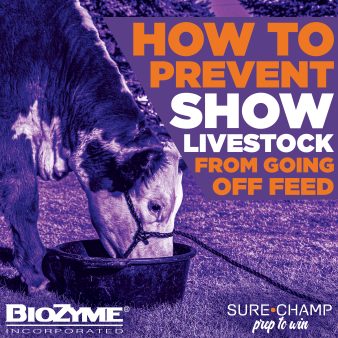By Dennis Delaney, Inside Sales Manager
Spring and early summer generally offer conditions long on grass and short on stress. Cows are in peak milk production, calves are at the most efficient period of their lives, and forages are at their best. Successful producers seize this opportunity to capture maximum pounds of beef per acre, at a time when production costs are at the lowest.
If nutritional needs are being met during breeding season, there is the potential to increase first-service conception and milk production. Calves born during the first 21 day cycle of the calving season can outweigh their counterparts by as much as 50 pounds. If lactation is increased by only two pounds per day as a result of a higher plane of nutrition, the added nutrients could impact weaning weights by as much as 30 pounds.

For the calf, whether nursing or on its own as a stocker, Amaferm® will help early rumen development and conversion rates, allowing for maximum weight per day of age. The added vitamins and minerals provided in VitaFerm® ensure that animals will perform to their full genetic potential, and producers can take full advantage of the ideal conditions.
Around mid-summer, like sand through an hourglass, the ideal conditions slowly give way to the laws of nature. As forages mature and temperatures rise, there can be a negative swing in forage digestibility and nutritive value. Exactly when this begins and the speed, at which it occurs, depends on several factors. It will vary from year to year and region to region, but it always occurs. Compounding this swing are the effects of heat stress and parasites that literally suck away the profits.
At the same time forage quality is diminishing, the nutrition needs are on the rise for a spring calving operation. While it is fairly rare to see calves lose weight if nutritional needs are compromised, it is certain they will not grow to their full genetic potential. Cows, on the other hand, can lose body condition and will often fall out of sync in the production cycle. Once this happens, it’s almost impossible for them to catch up. This is a major expense for the cow/calf operator.
Several management techniques can help with these grazing challenges. Producers may implement a rotational grazing program; creep feeding calves during periods of nutritional shortfalls will help out and even pay dividends; and early weaning will help cows recover some condition and reduce maintenance down the road.
VitaFerm with the Amaferm advantage offers a multitude of benefits to help offset problems and positively impact production. Here’s how it can turn problems into opportunities.
Heat Stress
Challenges
- Increased body temperature lowers breed-back rate
- Panting/Sweating expends energy
- Decreased grazing time decreases DMI
VitaFerm Opportunity
Amaferm has been shown to reduce body temperature and increase DMI. Cows are then able to more easily meet nutritional requirements and have increased milk production far into lactation. Our newest mineral VitaFerm Heat specifically targets heat stress and also contains garlic, to deter insects.
Reduced Forage Quality and Availability
Challenges
- Nutrient intake drops when calves need it most
- Poor conversion and low calf ADG
- Lower conception rates
VitaFerm Opportunity
Amaferm increases fiber digestion so more nutrients are absorbed from lower quality forages. Rumen VFA or microbial protein production is increased so more energy and protein are made available. Calves gain to their full genetic potential.
External Parasites (Horn flies and Horse flies)
Challenges
- Horn flies can reduce weaning weight by 10 to 25 pounds.
- Horse and horn flies can spread Anaplasmosis which can increase mortality rates and lower production outputs
VitaFerm Opportunity
Many commercial “fly control” minerals compromise nutrition. IGR and CTC options with ample nutrient fortification and the added benefit of increased forage utilization through Amaferm.
For assistance with your summer grazing program or challenges you may be having contact your Area Sales Manager or nutritionists.

